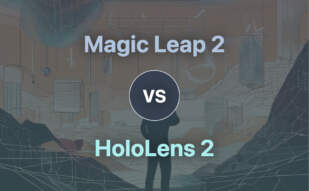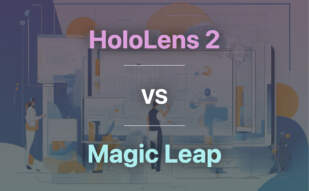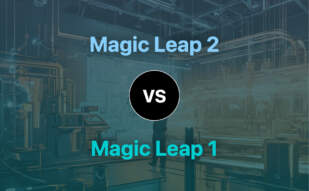Snippet:
If mixed reality user experience and visual rendering are priorities, choose Magic Leap 1. If your concern is robust enterprise use, efficient processing, and seamless hand-tracking, HoloLens 2 tops. Use Magic Leap for personal use and innovation, HoloLens for corporate functionality.
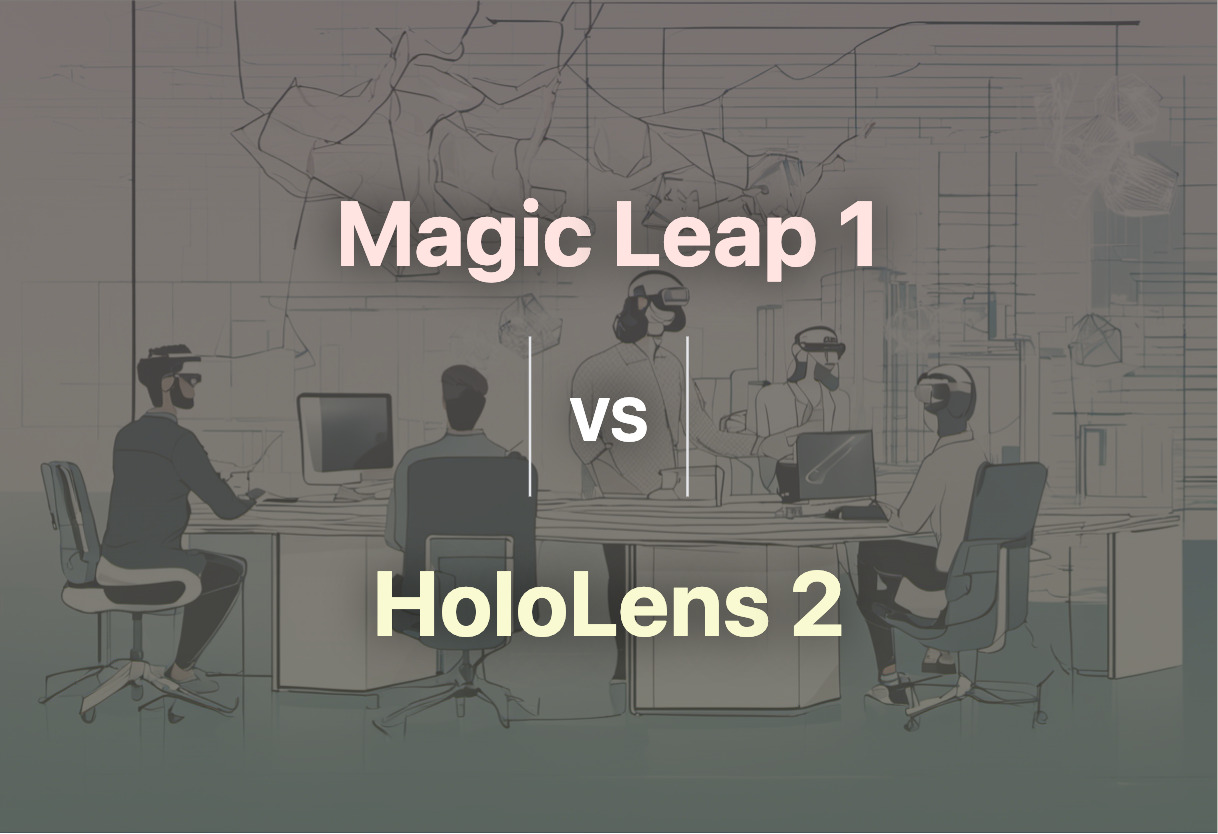
Key Differences Between Magic Leap 1 and HoloLens 2
- Target Market: Magic Leap aims at everyday computing, while HoloLens 2 targets the enterprise market, prioritizing productivity and education.
- Weight: Magic Leap weighs 260g versus HoloLens’ heavier 566g.
- Processor & Storage: Magic Leap uses Nvidia Tegra X2 chipset, 8GB memory, 128GB storage. HoloLens uses Qualcomm Snapdragon 850 processor and 64GB storage.
- Field of View: Magic Leap boasts 50% more field view than its competitor; however, HoloLens 2 made a significant improvement from its predecessor.
- Eye Tracking: Both have eye-tracking, yet HoloLens includes Infrared cameras for a more precise tracking.
- Operating environment: Magic Leap’s Lumen OS is Linux-based, while HoloLens uses Windows Mixed Reality.
- Battery Life: Both headsets provide up to three hours of use time.
| Comparison | Magic Leap 1 | HoloLens 2 |
|---|---|---|
| Target Market | Everyday computing users | Enterprise market |
| Weight | 260 grams | 566 grams |
| Processor | Nvidia Tegra X2 | Qualcomm Snapdragon 850 |
| Memory | 8GB | 4GB DDR4 |
| Storage | 128GB | 64GB |
| Resolution | 1440×1760 px | 2048×1080 px |
| Field of View (FOV) | 70° | 43° horizontal |
| Battery Life | Up to three hours | Approximate 3-hour |
| Sensor & Camera Features | 4 eye-tracking cameras | 1-MP Time-of-Flight depth sensor; Infrared cameras for eye-tracking; 8MP resolution camera |
| Software Features | Lumen OS; Magic Leap World app store; holographic chat | Operating system with application ecosystem; Microsoft Mesh |
What Is Magic Leap 1 and Who’s It For?
Magic Leap 1, hailing from tech initiator Magic Leap, is a comprehensive AR system that aspires to morph everyday computing with mixed reality experiences. A versatile build integrating a Lightwear headset and Lightpack computer device, it establishes a fascinating 3D playfield.
The device resonates with tech enthusiasts and forward-thinking individuals who envisage a paradigm shift in digital interaction. Confinement to indoor use doesn’t limit its appeal but rather emphasizes its uniqueness to those committed to exploring new tech frontiers.

Pros of Magic Leap 1
- Incites hologram-like objects in 3D space
- Features environment tracking and eye-tracking
- Sports extensive applications and a Linux-based Lumen OS
- Highly funded and backed by notable investors
Cons of Magic Leap 1
- Limited field of view
- Inconsistency in mixed reality visualizations
- Lacks mobile data options
- Currently guaranteed only for indoor use
What Is HoloLens 2 and Who’s It For?
Emerging from software titan Microsoft, HoloLens 2 is an innovative headset fundamentally designed for the enterprise market. With an accentuated focus on productivity and education, it defies the confines of entertainment.
The ideal fit for organizations seeking to accelerate digital transformation, it assimilates robust sensors and components to enhance efficiency. Professional users find it a convincing tool for engendering immersive learning and facilitating smart working.

Pros of HoloLens 2
- Targets the enterprise market with superior tech
- Offers solid hand-tracking and object anchoring
- Boosted resolution and field of view
- Integration with AzureCloud storage and extensive developer resources
Cons of HoloLens 2
- Priced on the higher end at $3,500
- More focus on productivity than entertainment
- Heavy, weighing in at 566 grams
- 3-hour battery life can be short for rigorous use
Magic Leap 1 or HoloLens 2: What’s The Superior Choice?
The final verdict between Magic Leap 1 and HoloLens 2 boils down to individual needs and perspectives. Let’s get into it.
For Augmented Reality Enthusiasts
Magic Leap 1i> stands out with its proprietary Lumen OS and a vision for everyday computing, offering a captivating mixed reality experience. However, its field of view and visual output could use improvements. HoloLens 2, while pricier, caters more to productivity and education applications, with some emphasized enterprise features.
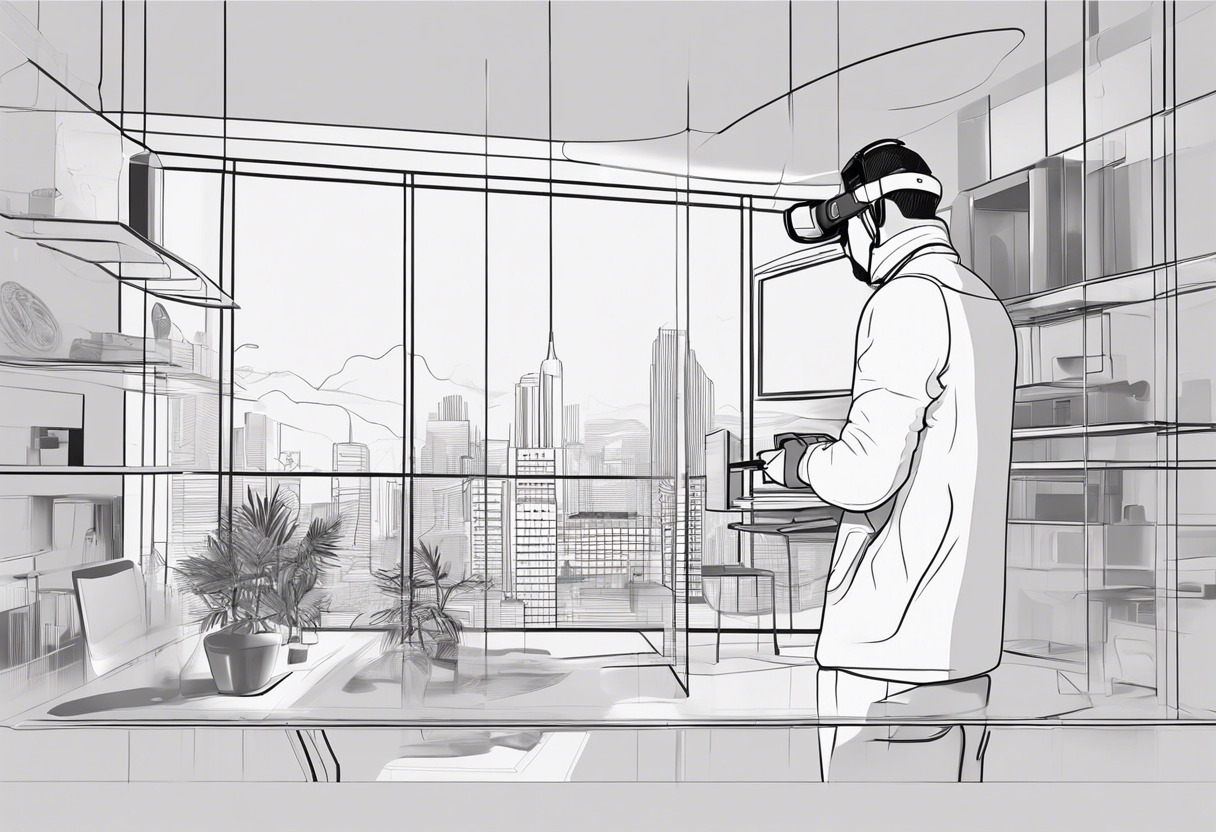
For Developers: Game-makers and App Creators
The Magic Leap 1’s robust application potential – from NBA mixed reality app, art apps, to interactive musical experiences – makes it an exciting canvas for creative development. HoloLens 2 is more appealing for enterprise app development, backed by Microsoft’s ecosystem and developer resources.

For Enterprise Sector
HoloLens 2 outshines with its enterprise-centric design , enhanced comfort, and high-powered software solutions. It supports AzureCloud storage and has promoted collaboration through Microsoft Mesh. Magic Leap 1, although innovative, lacks this enterprise-targeted edge.
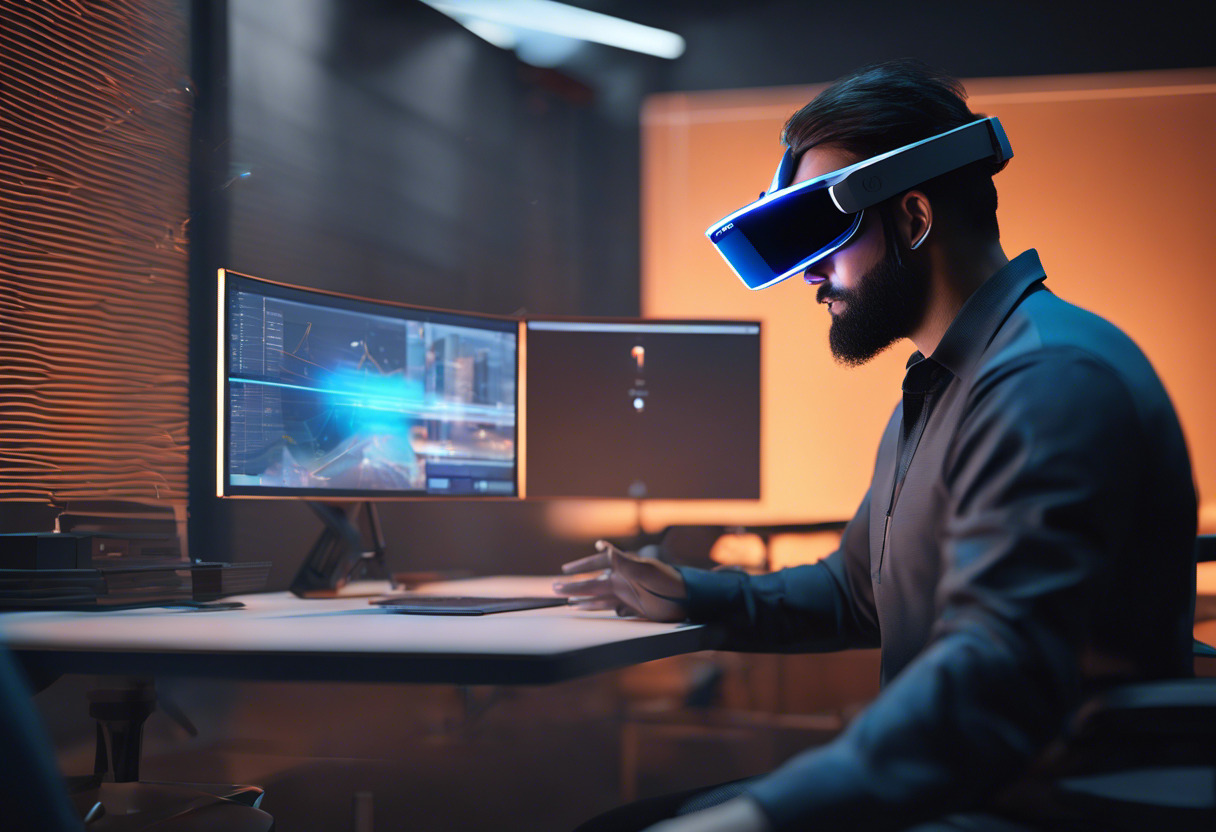
In the comparison showdown between Magic Leap 1 and HoloLens 2, the former captures the imagination of developers and AR enthusiasts, while the latter edges forward in enterprise use. Ultimately, your preferences and objectives dictate the crown-bearer in your world of AR.
Hannah Stewart
Content writer @ Aircada, tech enthusiast, metaverse explorer, and coffee addict. Weaving stories in digital realms.



